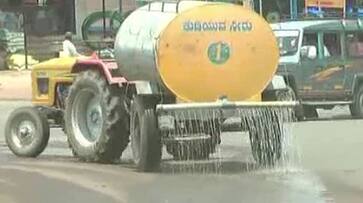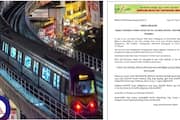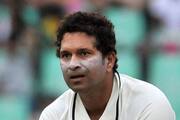This Global firm has the solution for the city's water crisis
- Groundwater, which is filling the gap currently, will disappear if we keep drawing 10 MLD and recharge only 2.5 MLD.
- Pumping Cauvery water to Bengaluru will be a costly affair because the city is located 3,000 feet above the water level.
- The institute is also using 'Aqueduct City' tool, which analyses the water availability, sewage recycling, urban flooding, and demand of water.

Amid projections that Bengaluru will soon run out of water by 2025 has pushed the panic button among many. However, a solution by the World Resources Institute (WRI) promises to give Bengalureans some cushion time. The organisation has taken up a study to arrive at an integrated water management plan that could save the city.
The WRI, however comes with a warning. Bengaluru has lost 80% of the surface water between 1990 and 2015 and is not far from going completely dry since the city gets 2,961 MLD (million litres per day) water against the demand for 3,347 MLD. According to one of its reports, "Groundwater, which is filling the gap currently, will disappear if we keep drawing 10 MLD and recharge only 2.5 MLD."
Speaking to the Deccan Chronicle, Jaya Dhindaw, Director Sustainable Cities, WRI India said, "We can still save Bengaluru. But a concerted effort should be made. For this, coordination among BWSSB, BDA, BBMP and lake conservation authority is essential." Alarmingly, 22 lakh people in the city do not have piped waterlines, which is the result of rapid depletion of ground water as concrete covers all lung spaces, which also replenished water tables. Further explaining the crisis, Dhindaw further added,"Pumping Cauvery water to the city is a costly affair since Bengaluru is located 3,000 feet above the sea level. But more than 49% of that water is wasted as it is lost due to seepage or theft. At the same time, we are wasting more than 30% of used water. In this situation, the city can hardly fulfill the demand which is rising by 53 MLD every year."
It is also being estimated that close to 80% of the 20 tmcft rainwater is wasted in the city every year due to lack of infrastructure harvesting rain water, which in turn leads to urban flooding. Thus, the WRI study is likely to come up with comprehensive solution to utilise rainwater to replenish the ground water. For this, it has to first convince the government to implement the BDA- revised master plan 2031 reducing the open spaces, which are important for recharging the ground water besides preempting creation of urban heat island due to concentration of concrete structures. The institute is also using 'Aqueduct City' tool, which analyses the water availability, sewage recycling, urban flooding, and demand of water. The institute is likely to come up with solutions on the basis of the data.
















